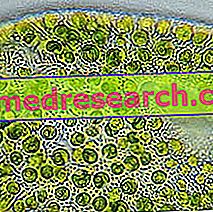Key points
The term "hydrocephalus" defines a serious disease characterized by the pathological accumulation of CSF in the sub arachnoid space and in the cerebral ventricles.
Hydrocephalus: causes

Hydrocephalus: symptoms
- Hydrocephalus in newborns and infants up to 2 years → increase in head circumference, epilepsy, convulsions, neck pain, loss of appetite, obesity, precocious puberty, mood changes, vomiting
- Hydrocephalus in children (> 2 years) and adults → mood alteration, cognitive / memory impairment, fever, lethargy, intestinal / bladder incontinence, spasms, parkinson-like symptoms, etc.
Hydrocephalus: diagnosis
The most indicated diagnostic strategies for ascertaining a suspected hydrocephalus are: Neurological test for hydrocephalus, Imaging test (MRI, CT, brain ultrasound), Arteriography, Intracranial pressure detection.
Hydrocephalus: therapy
The treatment for hydrocephalus is exclusively surgical: surgical shunt, ventriculostomy, removal of cerebral portions that produce liquor.
Definition of hydrocephalus
Hydrocephalus is an exaggerated and pathological increase in the amount of CSF in the sub arachnoid space and / or in the cerebral ventricles, expression of intracranial hypertension. Typically, hydrocephalus is formed when the amount of cerebrospinal fluid produced far exceeds that reabsorbed; sometimes, the pathological accumulation of CSF is the result of anomalies in its absorption.

Although it can affect anyone, hydrocephalus occurs more frequently in the pediatric age (primary pathological condition). The incidence of congenital hydrocephalus is estimated to be 3 children per 1, 000 healthy births.
In this informative article, we will try to simplify some complex concepts, focusing on triggers, main symptoms and complications related to hydrocephalus. For a better understanding of the disease, we will also explore diagnostic techniques, available therapies and prevention.
Causes
Hydrocephalus is caused by alterations or defects in the liquor dynamics.
To better understand the causes involved in hydrocephalus, let's take a step back, briefly recalling the liquor circle.
Cerebrospinal fluid is produced in the choroid plexuses, permeates the CNS, circulates in the cavities of the cranial base and in the spinal cord. This spinal-spinal fluid is subsequently reabsorbed into the bloodstream through the arachnoid villi. The aforementioned mechanism allows a dynamic balance between production and reabsorption of the liquor : when this system is destabilized, the liquor accumulates, thus triggering a series of events that lead inexorably to hydrocephalus.
Alteration of the CSF → liquor accumulation in the brain → dilatation of the cerebral ventricles → oc intracranial pressure → hydrocephalus
How can liquor accumulate?
The liquor can accumulate in several circumstances:
- Excessive production of liquor → "hydrocephalus from hyper-production of liquor" (a typical variant of patients suffering from papilloma of the choroid plexus or diffuse hyperplasia of the villi)
- Defect in liquor reabsorption mechanisms → "obstructive hydrocephalus"
- Delay in the development of arachnoid function and blockage of the physiological circulation of the liquor → "external hydrocephalus", typical of premature and genetically predisposed infants with a large head circumference
What are the causes triggering hydrocephalus?
We analyzed how hydrocephalus is formed; now let's see why .
Hydrocephalus can be congenital / malformative or acquired, therefore depending on underlying pathologies:
- Encephalocele: consists of a herniation of the meningeal and cerebral tissue, expression of a severe congenital brain malformation
- Spina bifida: its most formidable complication is hydrocephalus
- Intracerebral hematoma
- Intraventricular hemorrhages: particularly common are the post-partum ones (typical of premature babies)
- Encephalitis: inflammation of the brain
- Intrauterine infections (eg Toxoplasmosis)
- Meningitis: inflammation of the meninges with a mainly infectious etiology (from meningococcus or pneumococcus)
- Stenosis of the aqueduct of Silvio (or mesencephalic aqueduct): narrowing of the longitudinal canal located in the midbrain
- Arnold-Chiari syndrome: rare malformation of the posterior cranial fossa
- Dandy-Walker syndrome: another rare structural CNS anomaly
- Head trauma
- Tumors of the central nervous system (cancer of the brain or spinal cord)
In some patients, the diagnosis of hydrocephalus is not justified by any obvious cause: in such circumstances, one speaks of idiopathic hydrocephalus .
Risk factors
Some possible risk factors associated with hydrocephalus have been identified. The anomalies at the level of the Central Nervous System contribute to obstructing the flow of the liquor: this could trigger a start of hydrocephalus. Even complications during childbirth can alter the dynamics of the liquor, therefore favoring hydrocephalus.
Pregnant women should always undergo normal routine checks: the absence of prenatal tests or treatment prevents, in fact, any damage to the fetus, including hydrocephalus.
The parturient should refrain from alcohol consumption during pregnancy: indeed, as some scientific studies show, children born to alcoholic women are more exposed to the risk of hydrocephalus.
The expectant mother must pay particular attention to infections during pregnancy: it seems, in fact, that relatively simple pathologies such as rubella, mumps or syphilis can, in some way, predispose the unborn child to the risk of hydrocephalus.



